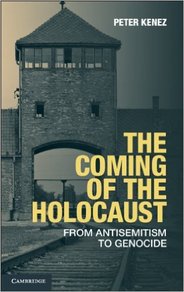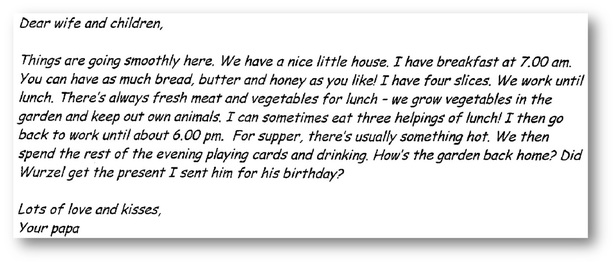| A slightly different take on Fri-deas this week, but equally valid and useful. In last week's Fri-deas I offered a summary of Darius Jackson's excellent session on teaching the Holoaust in schools. As a result, one brave LTU trainee, Jack, had a go at teaching part of the lesson to his Year 9 students. These are his thoughts on how it went. Teaching the Holocaust: A trainee teacher's reflection Having attended a 'Teaching the Holocaust' training day as part of my LTU PGCE course I was inspired to try out one of the activities that I had experienced. Firstly I told the story of Barney Greenman and his death at Auschwitz during the Second World War - this hooked the pupils into the lesson. They then had to write down who they thought killed him ( we would revisit this again at the end of the lesson) The first main task was to come up with adjectives to describe how we defined the following words: Perpetrator, Collaborator, Bystander, and Rescuer. |
Each pupil would have a personal story of someone in some way be linked to the Holocaust. This was an excellent chance to highlight differentiation, as I planned which person would best match a pupil's ability in terms of the complexity of the story. By differentiating in this way, I was able to ensure that students were all able to participate in task. Once they had filled in their worksheet about their person, they discussed them with the other members of their group (again these groups were differentiated).
Pupils were than asked to make a judgement about their person, whether they were in fact a Perpetrator, Collaborator, Bystander or Rescuer. I then instructed pupils to move into one of the 4 corners of the room, which I had previously labelled Collaborator, perpetrator etc... Pupils then had to rank their person against this scale and justify why they were there - something which enabled me to really stretch and challenge all pupils.
Finally the pupils were once more asked to consider Barney Greenman - many pupils had changed their opinion.
Some post-lesson thoughts
The lesson was, overall a success, which was lucky as it was observed by my ITT coordinator! The lesson required a good pace, and quick transitions between tasks, which has been something I have been looking to work on. The pace of the lesson was good, a definite improvement on previous lessons. The pupils were engaged throughout, and the differentiation ensured that the majority of pupils were on task the majority of the time. I am confident that all pupils progressed in the lesson, as I was able to circulate and discuss individual people's stories with pupils throughout.
Improvements
The pace at the beginning of the lesson could have been improved, perhaps too long was spent on the first task which meant that the plenary task was slightly rushed [might this be a 2 lesson sequence of work? AF].
I would also have like to include some AFL, which could have been done very simply: at the start of the lesson I could have asked 'Who killed Barney Greenman,' and asked the pupils to respond, on a scale of 1-5, of how confident they were they could answer the question. I could have asked this question again at the end.




 RSS Feed
RSS Feed
